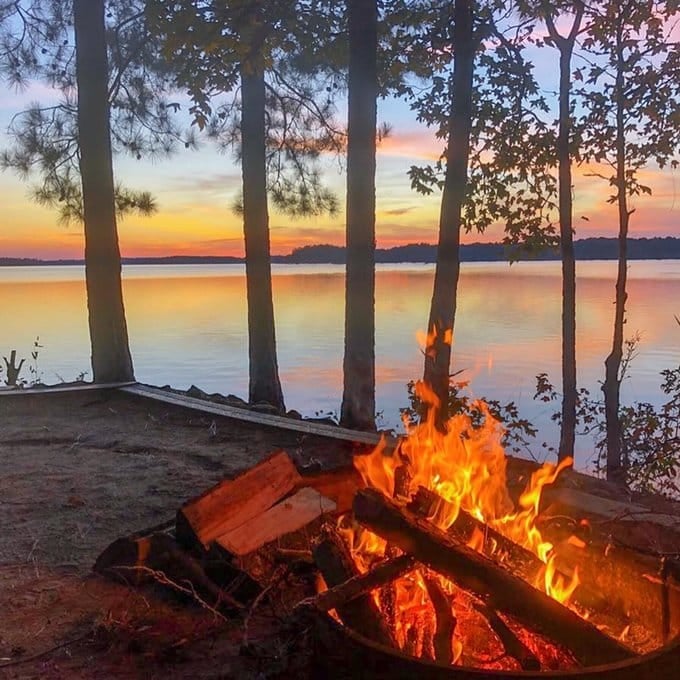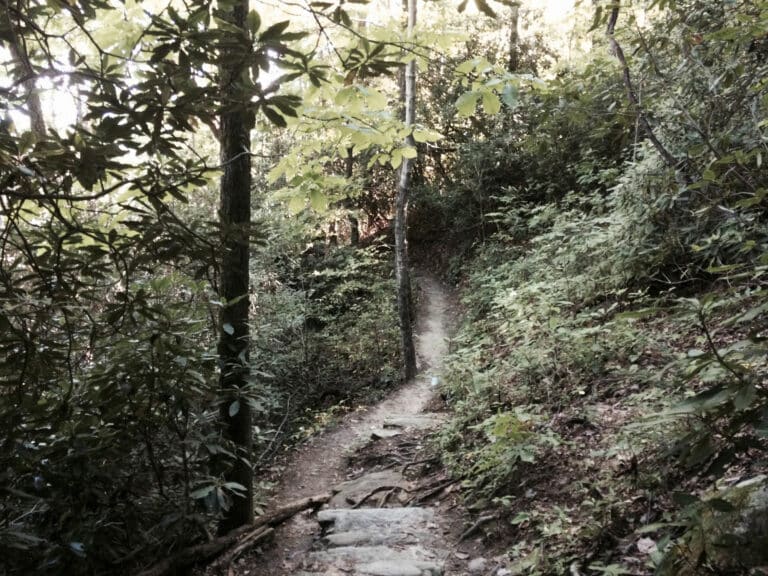Once upon a time, an 18-foot tipi was my home from late summer until Christmas. A tipi seemed like a good thing to make with 30 yards of canvas left over from an aborted art career. I had realized the importance of fully living each day as it comes, and I needed a quiet place to refocus my life.
It only took a week to make the tipi, thanks to a good friend who shared her home with electricity and a sewing machine. The tipi poles—well, that’s a different story. It took most of the summer to get the poles ready. Poplar saplings would have made ideal ones because they grow tall, straight, and narrow. Unfortunately poplars are very scarce where I was in the far northwest corner of Highland County, Va. Oaks and sugar maples creep down the west side of Lantz Mountain. I scouted the woods for poles during short breaks in the steady rain, and by summer’s end, 17 smooth poles lay in a natural meadow near a spring below.
The three heaviest poles form a tripod to cradle the twelve others framing the tipi (two other poles are used for the entrance). Setting up the tripod required a little help from a friend. My friend left and I rested the 12 poles in the tripod’s crotches, then ran around the structure with the lashing rope until it bound them tightly at the top. Once the poles were up, it was a simple matter to pull the tipi cover around the frame and lace it together. Deer rib bones are just the right size and shape to do this. Making a liner for the tipi was also essential: most water drips will fall onto the liner, which ushers them back outside.
A functional tipi stops short of the ground. The space in between creates an updraft to keep smoke from the fire rising instead of filling the structure.
Traditionally, tipis face east, and with the predominant winds coming from the west at my site in the Blue Ridge Mountains, east was definitely the best direction for the door to face.
Putting the tipi in the woods would have been like building a glass house next to a golf course. It’s no wonder the woodland Indians in the eastern part of this land built wigwams. Tipis are for open spaces, not places where falling tree limbs can pierce the walls.
Some people say a tipi has magical qualities. I found the magic around it, not just in it. A person inside, protected from the elements, can still smell the morning dew or hear a deer snort.
I heard my first grouse drum from it. At first I thought someone was trying to start a single-stroke engine in the distance. I thought to myself, “Who dare interrupt the peace of this spot six miles from the nearest full-time resident?” It started out as a slow low thump, thump, thump and increased in speed, then stopped. After several go-rounds, I realized that the sound wasn’t some distant machine stalling, but a not-so-distant grouse.
Tipis don’t normally have windows. I created one with plexiglass inserted in what could have been a canvas back door frame. The 45-degree wall made it both window and skylight. While standing inside, I could see up the valley, and when lying down at night, I could see the stars. I loved the window, to see outside while staying toasty inside.
Once, however, the window nearly caused me a heart attack. Early one morning, sleeping with my head beneath the window, I woke abruptly to an extremely loud and close snort. Eyes jarred open, I discovered the nose of a very large horse pressed to mine with only a thin membrane of clear plastic between. I jumped up, accidentally hitting my head against the horse’s jaw and scaring it away.
When I woke to the first snow of the season, the light coming through the canvas had an unusual glow. It was quiet, too quiet. The fire was out. Until then, firewood consisted of sticks and branches gathered from the nearby forest edge. I realized that I would eventually need larger logs to make it through the winter. I opted to get a small woodstove, so that I could use large logs that would keep a fire burning all night. I thought about the Plains Indians who lived in tipis—there wasn’t much wood for fires in the plains, so the Indians burned buffalo dung. Imagine how valuable good tipi poles must have been to them, particularly before they had horses.
The stove with two sections of pipe created a draft so the smoke went up to the tipi’s top without letting sparks near the canvas. But it spoiled any romantic notions of self-sufficiency, which was a good thing. People like to think they can be independent of others, but they can’t. We may live alone, out in the woods without modern conveniences, but not without help from other folks. They are the people who make canvas, stoves, and saws. Community is a good thing. A group of people sharing a fire can divide the work of gathering wood for it. Less work, more warmth.
In mid-December, I woke and couldn’t see out the window. Two feet of snow covered the meadow and valley. Inside my head a voice shouted, “What are you thinking? There is an empty house half a mile up the valley that I could stay in. What if you fall and break a leg out here by yourself?” I walked away from the tipi and up the valley. The sun reflected brightly on the snow. I reflected on community and people helping each other, needing each other. •







